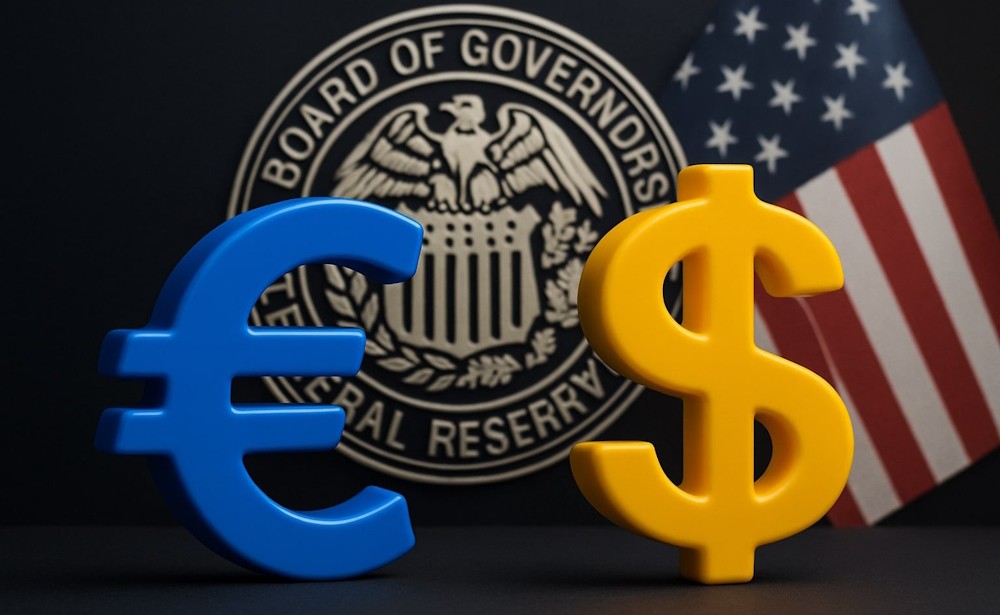The EUR/USD pair is currently positioned at 1.1753, marking its peak in four days, following a rebound from the previous week’s low of 1.1660. The recent rebound has been driven mainly by a decline in the U.S. dollar, with investors factoring in escalating political instability related to the impending government shutdown and an increased likelihood of further Federal Reserve rate cuts before the end of the year. Treasury yields are experiencing a decline across various maturities, which is diminishing the dollar’s yield advantage and contributing to the euro’s upward movement. The current landscape of tariffs and trade tensions is heightening uncertainty, resulting in an environment where the euro is strengthening, even in light of disappointing domestic data.
On September 17, the Federal Reserve reduced interest rates by 25 basis points, adjusting its policy rate to a median forecast of 3.6% for 2025. The revised dot plot suggests an additional 50 basis points of easing by the end of the year, with more modest reductions anticipated to extend into 2026 and 2027. Inflation persists at a stubborn 2.7% for headline PCE and 2.9% for core, with Powell highlighting that tariffs are sustaining elevated goods prices, while there are initial indications of a slowdown in services inflation. He recognized the difficulty of managing a cooling labor market alongside ongoing price pressures, characterizing the risks as “more balanced.” The markets are currently exhibiting a dovish sentiment: Data indicates a 90% likelihood of a rate cut in October and approximately 70% chance of an additional cut in December. The recent aggressive repricing has led to a decline in the Dollar Index, which now stands at 97.73, marking its third consecutive session of losses. This situation has created an opportunity for EUR/USD to regain momentum.
The European Central Bank has adopted a cautious approach, holding rates steady while forecasting core inflation at 2.4% for 2025, with a decline anticipated to 1.9% in 2026 and further to 1.8% in 2027. President Christine Lagarde emphasized that policy is in a “good place” and reaffirmed that decisions will continue to be based on data. However, the macroeconomic indicators from the Eurozone have not met expectations. In August, German Retail Sales experienced a decrease of 0.2%, continuing the downward trend from July’s 0.5% decline. Additionally, import prices saw a month-on-month drop of 0.5% and a year-on-year decline of 1.5%. Confidence indicators present a mixed picture, as Consumer Confidence has seen a slight improvement to -14.9, while sentiment in the industrial and services sectors has experienced a decline. The euro’s strength is increasingly reliant on dollar weakness rather than robust fundamental demand from the Eurozone, especially in the absence of stronger domestic support.
Recent trade tensions are exacerbating the weakness of the dollar. Former President Trump’s announcement of new tariffs, set to take effect on October 14, encompasses a 10% levy on lumber imports and 25% duties on vanities, cabinetry, and upholstered furniture, in addition to previously established tariffs on heavy trucks and pharmaceuticals. The measures elevate inflation risks and pose a threat to supply chains, thereby strengthening expectations for Fed easing to support growth. The ongoing uncertainty surrounding the government funding bill has introduced significant political risk. VP JD Vance cautioned that a shutdown is “highly likely,” which could lead to federal job cuts. Additionally, important data releases, including Friday’s Nonfarm Payrolls, may experience delays. Such developments limit the Fed’s access to critical data and maintain downward pressure on the greenback.
Speculators have started trimming bullish euro bets. The CFTC data for the week ending September 23 indicated a decline in net longs for EUR, which fell to 114.3K contracts, marking the lowest level since July. Concurrently, institutional net shorts decreased to 165.8K contracts. Open interest increased to 859.2K, marking a two-week high, indicating a careful approach as volatility escalates. This suggests that traders are hesitant to pursue the euro’s upward movement without more definitive catalysts, despite the pair remaining above critical support levels.

